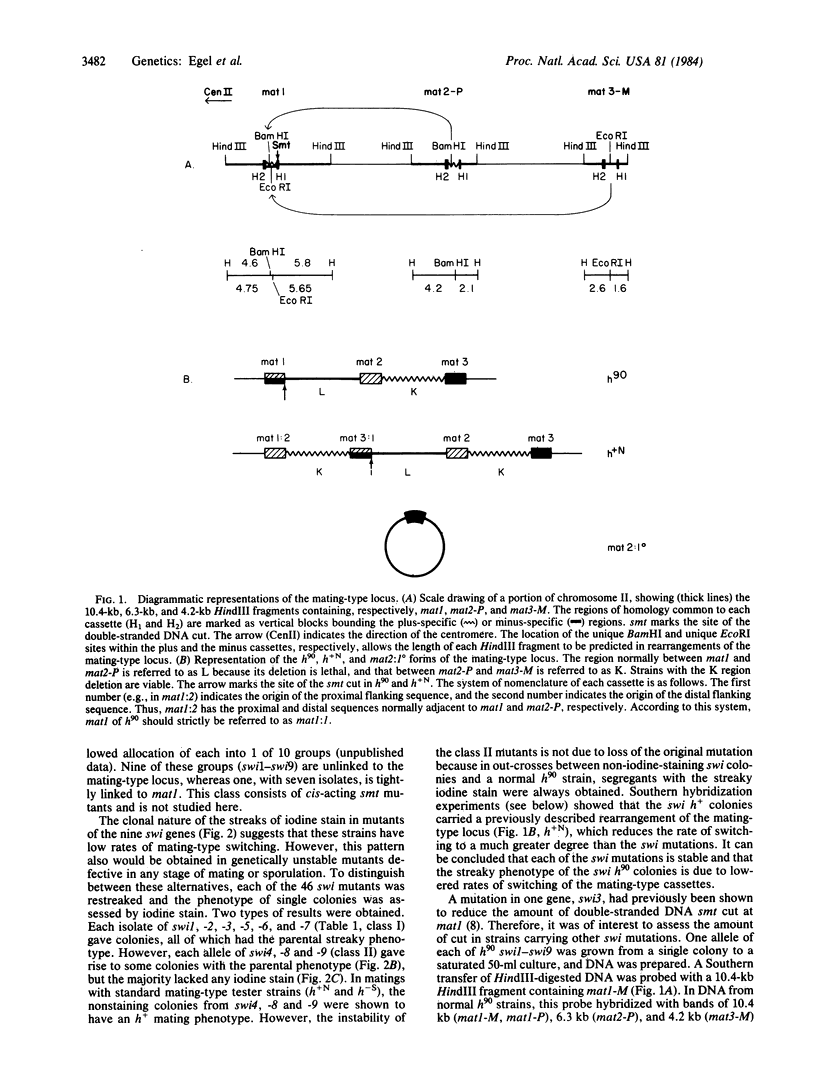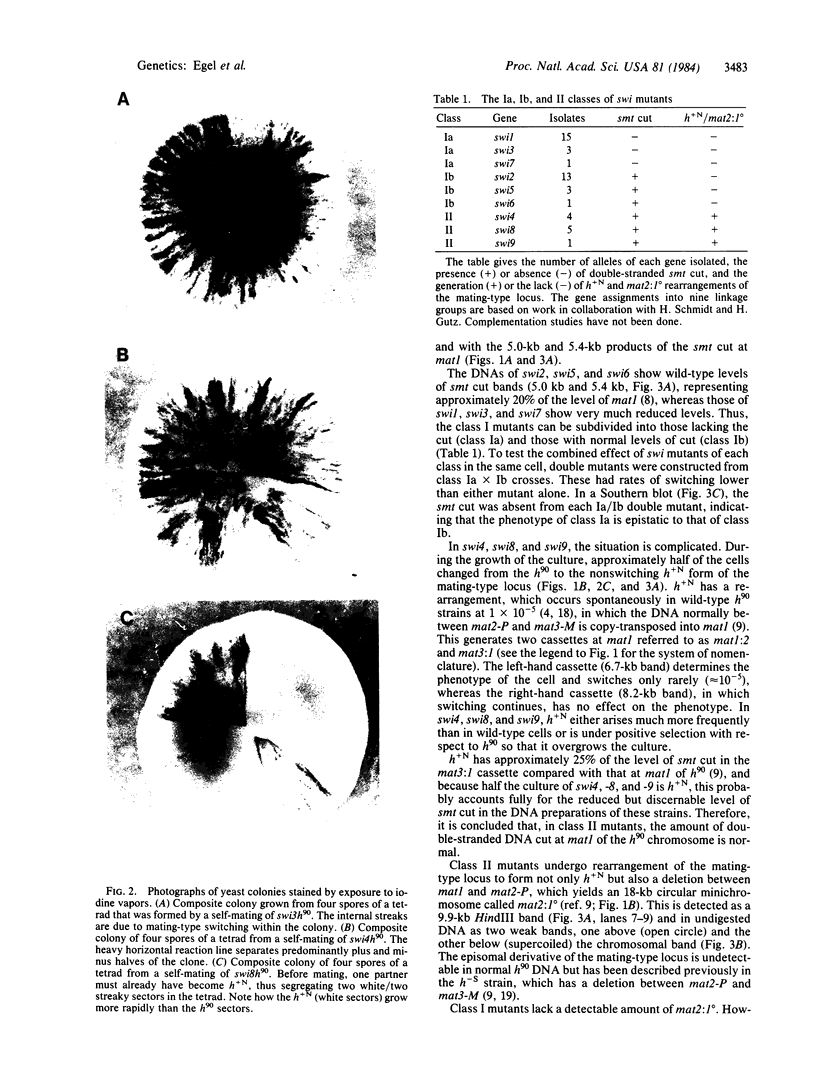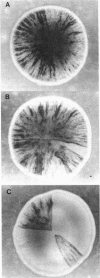Abstract
The fission yeast Schizosaccharomyces pombe switches mating type by transposition of a copy of DNA derived from either of the two storage cassettes, mat2 -P and mat3 -M, into the expression locus, mat1 . The recombinational event of switching is initiated by a double-stranded DNA break present in approximately 20% of the molecules at mat1 . Fifty-three mutants defective in switching of mating type have been isolated previously, and each has been assigned to 1 of 10 linkage groups. One group consists of cis-acting mutations at mat1 , which reduce the amount of the DNA double-strand cut. The remaining nine groups are mutations in genes that are unlinked to the mating-type locus and are studied here. Three ( swi1 , -3, -7) are required for formation of the double-strand cut, whereas the others are not. Mutants of three genes ( swi4 , -8, -9) undergo high-frequency rearrangement of the mating-type locus indicative of errors of resolution of recombinational intermediates. The remaining three ( swi2 , -5, -6) have normal levels of cut, do not make errors of resolution, and possibly are required either for efficient utilization of the cut or determining the directionality of switching. The data suggest that the switching process can be dissected into genetically distinguishable steps.
Full text
PDF




Images in this article
Selected References
These references are in PubMed. This may not be the complete list of references from this article.
- Beach D. H., Klar A. J. Rearrangements of the transposable mating-type cassettes of fission yeast. EMBO J. 1984 Mar;3(3):603–610. doi: 10.1002/j.1460-2075.1984.tb01855.x. [DOI] [PMC free article] [PubMed] [Google Scholar]
- Beach D., Nurse P., Egel R. Molecular rearrangement of mating-type genes in fission yeast. Nature. 1982 Apr 15;296(5858):682–683. doi: 10.1038/296682a0. [DOI] [PubMed] [Google Scholar]
- Egel R. Frequency of mating-type switching in homothallic fission yeast. Nature. 1977 Mar 10;266(5598):172–174. doi: 10.1038/266172a0. [DOI] [PubMed] [Google Scholar]
- Egel R. Mating-type switching and mitotic crossing-over at the mating-type locus in fission yeast. Cold Spring Harb Symp Quant Biol. 1981;45(Pt 2):1003–1007. doi: 10.1101/sqb.1981.045.01.116. [DOI] [PubMed] [Google Scholar]
- Egel R. The genetic instabilities of the mating type locus in fission yeast. Mol Gen Genet. 1976 Jun 15;145(3):281–286. doi: 10.1007/BF00325824. [DOI] [PubMed] [Google Scholar]
- Gutz H., Doe F. J. Two Different h Mating Types in SCHIZOSACCHAROMYCES POMBE. Genetics. 1973 Aug;74(4):563–569. doi: 10.1093/genetics/74.4.563. [DOI] [PMC free article] [PubMed] [Google Scholar]
- Hicks J., Strathern J. N., Klar A. J. Transposable mating type genes in Saccharomyces cerevisiae. Nature. 1979 Nov 29;282(5738):478–473. doi: 10.1038/282478a0. [DOI] [PubMed] [Google Scholar]
- LEUPOLD U. Studies on recombination in Schizosaccharomyces pombe. Cold Spring Harb Symp Quant Biol. 1958;23:161–170. doi: 10.1101/sqb.1958.023.01.020. [DOI] [PubMed] [Google Scholar]
- Nasmyth K. A., Tatchell K. The structure of transposable yeast mating type loci. Cell. 1980 Mar;19(3):753–764. doi: 10.1016/s0092-8674(80)80051-1. [DOI] [PubMed] [Google Scholar]
- Nasmyth K. Molecular analysis of a cell lineage. Nature. 1983 Apr 21;302(5910):670–676. doi: 10.1038/302670a0. [DOI] [PubMed] [Google Scholar]
- Strathern J. N., Klar A. J., Hicks J. B., Abraham J. A., Ivy J. M., Nasmyth K. A., McGill C. Homothallic switching of yeast mating type cassettes is initiated by a double-stranded cut in the MAT locus. Cell. 1982 Nov;31(1):183–192. doi: 10.1016/0092-8674(82)90418-4. [DOI] [PubMed] [Google Scholar]






